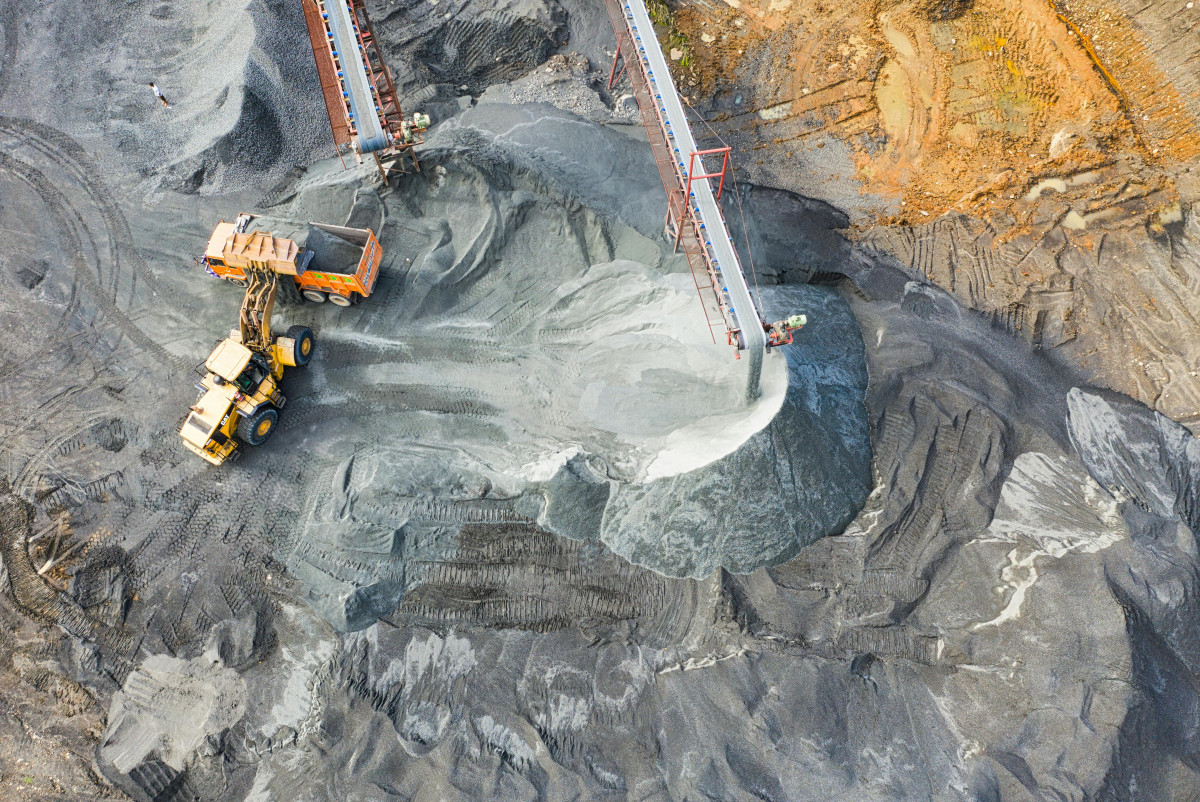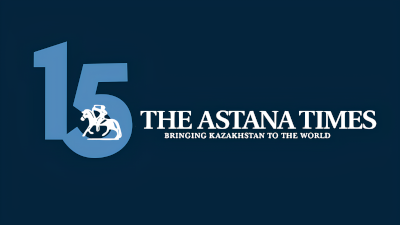ASTANA – As the world enters a new phase in the struggle for resources, discussions on the green transition and rare earth metals take center stage. Kazinform news agency examines the industry’s development prospects and Kazakhstan’s investment attractiveness.

Photo credit: pexels.com
Key facts
Rare earth metals, also known as rare earth elements (REEs), are now referred to as the new oil and have already triggered an intense race. A striking example is Greenland, which has caught the eye of United States President Donald Trump.
Global REE reserves are limited, and their deposits are among the least studied, giving countries that possess them a competitive edge and a chance to pull ahead.
Their wide application range spans strategic sectors such as energy and defense. They are used to produce screens, lasers, fiber optics, electric motors, magnets, fluorescent lamps, lithium-ion batteries for smartphones, navigation systems and radars.
Kazakhstan is rich in minerals that can significantly benefit the economy.
“Our country has great potential for the extraction and processing of rare and rare earth metals, including lithium, the global demand for which is growing. This means that we must attract investments and advanced technologies in this industry, focusing on both foreign investors and domestic businessmen,” President Kassym-Jomart Tokayev said at a recent expanded government meeting.
Market leaders
According to the U.S. Geological Survey, the top five countries for REE extraction in 2023 were China, the U.S., Myanmar, Australia and Thailand. China also led the list of top REE suppliers in the second quarter of 2024, followed by Malaysia, the U.S., Japan and France, according to MetalResearch.
The International Energy Agency predicts China will maintain this strong position in the critical materials processing sector in the coming years. In this context, China introduced new regulations on REEs last year. These rules include oversight and inspections of production, smelting and extraction, trade, imports and exports. They also establish penalties for violations under the law.
Industrial and resource security are becoming higher priorities for other countries as well. The forecast is clear: demand for REEs will continue to grow, and the market will fragment based on geopolitical factors. In this regard, Kazakhstan is well-positioned for growth while also addressing challenges in geological exploration.
Land of opportunities
Compared with the U.S. and European countries, which are increasingly concerned about the REE market, Kazakhstan’s reserves position it as a land of opportunities.
Kazakhstan is working to improve its investment climate to capitalize on these opportunities, particularly for foreign investors. Specifically, the country has adopted practices from Australia, which ranks at the top of the AT Kearney Investment Attractiveness Index. Amendments to the 2023 Law on Subsoil Use introduced a simplified procedure to grant investors rights to subsoil use and exploration.
Kazakhstan’s foreign partners benefit from many investment incentives, including exemptions from customs duties and VAT on imports, state in-kind grants, tax breaks on corporate income, land and property taxes and investment subsidies.
Promising projects
Reforms and measures by the Ministry of Industry and Construction have attracted major international companies to the country’s geological exploration sector. According to Minister Kanat Sharlapaev, the total investment from 10 companies reached approximately 41 billion tenge (US$78 million), as reported at a government meeting in December 2024.
“Both the President and the relevant institutions tasked with promoting Kazakhstan’s investment potential, including in the field of rare earth metals, are hard at work. The geological services of some Western companies have already expressed interest in allocating grants,” said political scientist Eduard Poletayev.
In November 2024, Kazakhstan and France signed a Roadmap for Strategic Partnership in Paris to formalize cooperation for critical resources and materials for 2024-2026. According to French Ambassador to Kazakhstan Sylvain Giogue, this cooperation in raw material exploration and production is expected to bring French companies into Kazakhstan’s geological market as early as this year.
Meanwhile, Germany’s HMS Bergbau AG and Kazakhstan’s Qazaq Lithium are working on a joint project to develop lithium deposits in eastern Kazakhstan.
At a meeting between the heads of state of Central Asia and German Chancellor Olaf Scholz, Kazakhstan’s President invited Germany to participate in creating a regional research center for REEs based at the Kazakh Center for Technological Forecasting.
The Korea Institute of Geoscience and Mineral Resources (KIGAM) has conducted exploration work at the Bakennoye lithium deposit in the East Kazakhstan Region. In June, Kazakhstan and South Korea also signed a memorandum of cooperation on critical minerals and metals.
“Any new investors should receive maximum preferences and the ‘green light.’ In addition, the terms of signing agreements should be transparent, open and as beneficial as possible for Kazakhstan,” said Poletayev.
Local investors should not be forgotten. Even if they cannot invest large sums in deposit development, local capital can be effective in many small projects.
Risks
According to experts, the REE industry is science- and labor-intensive. Accurately assessing both the required investment and potential returns poses a significant challenge.
“Even at the decision-making stage, it is unclear whether the investment will pay off. It is also unpredictable, as the market reaction and price fluctuations depend largely on China, the leading consumer and exporter. These fluctuations can range from tens to hundreds of percent,” Poletayev explained.
Oil expert Olzhas Baidildinov shares these concerns, drawing parallels with the oil and gas sector. An exploratory well in the oil industry costs approximately $10 million to $30 million, and only one in three will be productive. The other two? Either they will be dry, or they will confirm reserves that are unprofitable to produce. In the case of REEs, prospecting and exploration can cost not tens but hundreds of millions of dollars, making the risks even higher.
Since Kazakhstan lacks investment in geological exploration, foreign investors are needed. They can handle exploration and, if successful, build processing plants and supply Europe. In turn, the country benefits from tax revenues.
“As long as prices remain high and rare earth metals are in short supply, interest in this sector will continue to grow. Kazakhstan, with nearly the entire periodic table represented in its resources, will attract attention, especially given the influence of geopolitics and macroeconomic uncertainty. However, there is a risk that the development of rare earth elements and deposits could eventually ease the shortage,” Poletaev added.
Another risk, as Baidildinov points out, is that REEs may be exported for high-tech production, which is unlikely to emerge in Kazakhstan. As is often the case, few are willing to share such technologies. In this scenario, China could quickly close its market because Central Asian countries are neither major consumers nor technology hubs and lack sufficient demand.
“We need at least one precedent of a major investor putting in tens or hundreds of millions of dollars to see the window of opportunity,” Poletayev said. “Regardless of preference, REE products are in demand by industrially developed nations, and our domestic market’s capacity is not just limited — it is virtually nonexistent for certain rare earth elements.”
He suggests Soviet-era discoveries, where deposits were identified but not necessarily developed. Kazakhstan, he proposes, should aim to position itself not only as an oil-producing country but also as a supplier of a broader range of mining and metallurgical products to the global market.
“Kazakhstan needs to take a more proactive approach, providing certain incentives for geological exploration while avoiding mistakes made in the oil and gas sector, where 40-year production-sharing agreements were signed. What is needed is striking a balance by clearly outlining the conditions for developing these fields, with the nation’s interests as the number one priority,” Baidildinov said.
The expert described the forecasts and prospects for Kazakhstan’s rare earth market as promising, noting that the industry, in general, is now in focus all over the world. High-tech products, including batteries and elements that can cost several hundred thousand per kilogram, all contain REEs.
According to the Comprehensive Plan for the Development of the Rare and Rare Earth Metals Industry for 2024-2028, Kazakhstan ranks among the global leaders in reserves, boasting 124 promising deposits. These include tungsten, molybdenum, lithium, tantalum, niobium, beryllium, titanium, zirconium and vanadium.
“The main period of geological exploration in Kazakhstan took place during the Soviet era, when a clear, unified system for mineral prospecting and exploration was established based on the demand for metals,” says mining engineer and geologist Bolat Kabaziyev, with 50 years of experience. “Before and after World War II, the focus was on non-ferrous and ferrous metals, as well as coal. In the 1950s and 1960s, exploration shifted to gold and uranium, while the 1970s and 1980s prioritized hydrocarbons.”
At the time, smartphone production was not in the picture, making the extraction of REEs largely unprofitable. Beryllium, for instance, was a byproduct in many deposits but had little industrial use during the Soviet era. Tantalum, on the other hand, was highly valued for its unique properties and acquired a role in rocket engineering.
Generally speaking, the challenge of extracting rare earths lies in the fact that deposits are typically polymetallic. This means REEs are found in small quantities alongside more commonly mined metals, often located in less-developed regions, and are often merely the by-products of processing.
“Hundreds of millions of tons of industrial waste have accumulated in Kazakhstan over decades of mining and mineral processing — dumps, tailings and metallurgical slags that contain valuable metals. However, this waste is hardly used to re-extract these metals. Most of it belongs to major mining and metallurgical companies like Kazakhmys and Kazzinc, with approximately 10 percent being used,” said Kabaziyev.
Talent gap
Bolat Kabaziyev suggests exploring advanced technologies for extracting valuable metals from industrial waste and recycling, which are operating in several countries. For example, Polish enterprises recover significant amounts of useful materials from coal slag. He also highlights another industry challenge: the shortage of skilled personnel.
“Unfortunately, due to the lack of experienced specialists in REEs, this sector remains stagnant. There is little to no monitoring of subsoil conditions, including quantity and quality. Since rare earth metals in Kazakhstan were not previously studied, there is no industrial or educational foundation for their development. We need to adopt foreign best practice, expertise and advanced extraction technologies for ores and concentrates, as well as establish a new research base and train young specialists — geologists, technologists and processing engineers,” he explains.
Kazakhstan has significant potential to develop its rare earth market, but success will require more than just investment in technology and expertise. Investors must also contribute to workforce development, as was already seen in the oil and gas sector. Time is of the essence. Not only must resources be available, but they must also be integrated into economic circulation. With multiple countries possessing rare earth reserves, those who enter the market faster and more profitably will gain a competitive advantage.
As a reminder, at an expanded government meeting, President Kassym-Jomart Tokayev said that reforms in the subsoil use sector must continue regardless of circumstances. He instructed that the legislative framework for the Unified Subsoil User Platform must be completed by the end of the current parliamentary session.
Earlier, Minister of Industry and Construction Kanat Sharlapaev highlighted ongoing efforts to address the personnel shortage in exploration.
The article was originally published in Kazinform.


